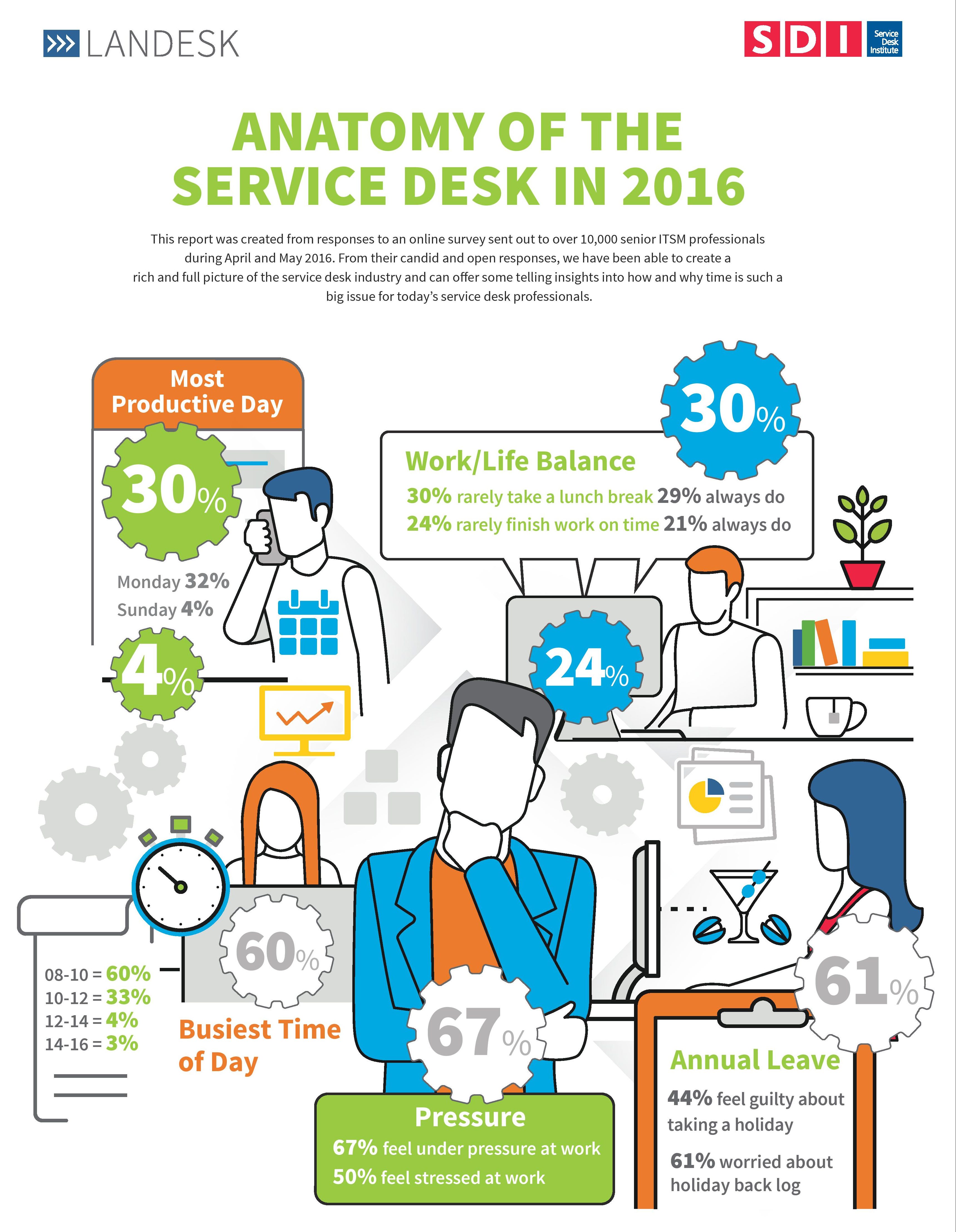Infographic: Anatomy of the Service Desk in 2016
For a few months now, I’ve been talking about the evolution of service desk staffing models. I’ve become more convinced of this change as we publish more and more SDI research. I have the privileged position of being able to look at all SDI research as a whole, which means that while reports will have a particular focus, I can marry the findings up with other research to draw broader conclusions.
I have been able to do this with the recently published Anatomy of a Service Desk report, kindly sponsored by LANDESK. The report focuses on how service desk professionals spend their time, the strains and pressures of day-to-day service desk activity and the perception they have of their colleagues and access to resources. All said, the report is refreshingly positive; professionals felt less pressured and stressed than ever before, and there is an increasing focus on proactivity and strategy over the reactive firefighting that has dominated the landscape for many years.
It’s the latter point that interests me the most. Although not a remarkably significant increase – the average service desk now spends 38% of its time on strategic projects, an increase of 5% since 2012 – it’s possible to draw some insight when matching the increase with other trends in the industry.
Specifically, the increased utilization of technologies to ‘sponge up’ some reactive support is a trend I’ve been wittering on about for a while. My argument for the inevitable rise of technology is based on several themes – customer and staff expectations, the increased prevalence and cost-effectiveness of the technologies themselves, and the drive to provide more value with less resource to name a few.
What interests me is whether the positive results we’ve seen in the Anatomy of the Service Desk research and the increased adoption of technologies noted in other reports are linked. Are professionals less pressured and stressed because self-help and self-service are absorbing some of the reactive support burdens? Are service desks now better able to focus on strategic projects because automation has reduced time-consuming manual tasks?
At the moment, the correlation could just be a coincidence. However, it’s food for thought until the next piece of SDI research is published looking to link all the trends together.
I will be talking about these trends at LANDESK Connect 16 this year; I hope to see you all there and look forward to joining you all in debating what these trends mean for us and our industry.

